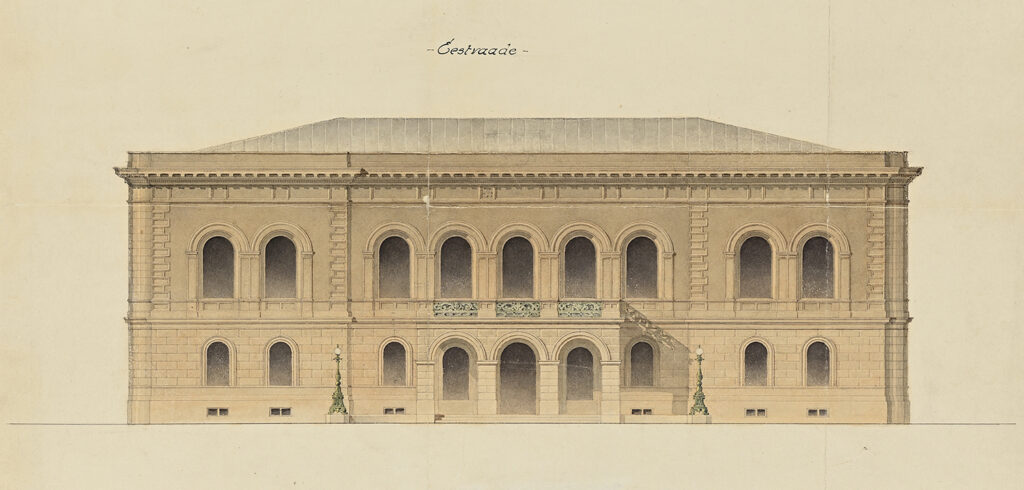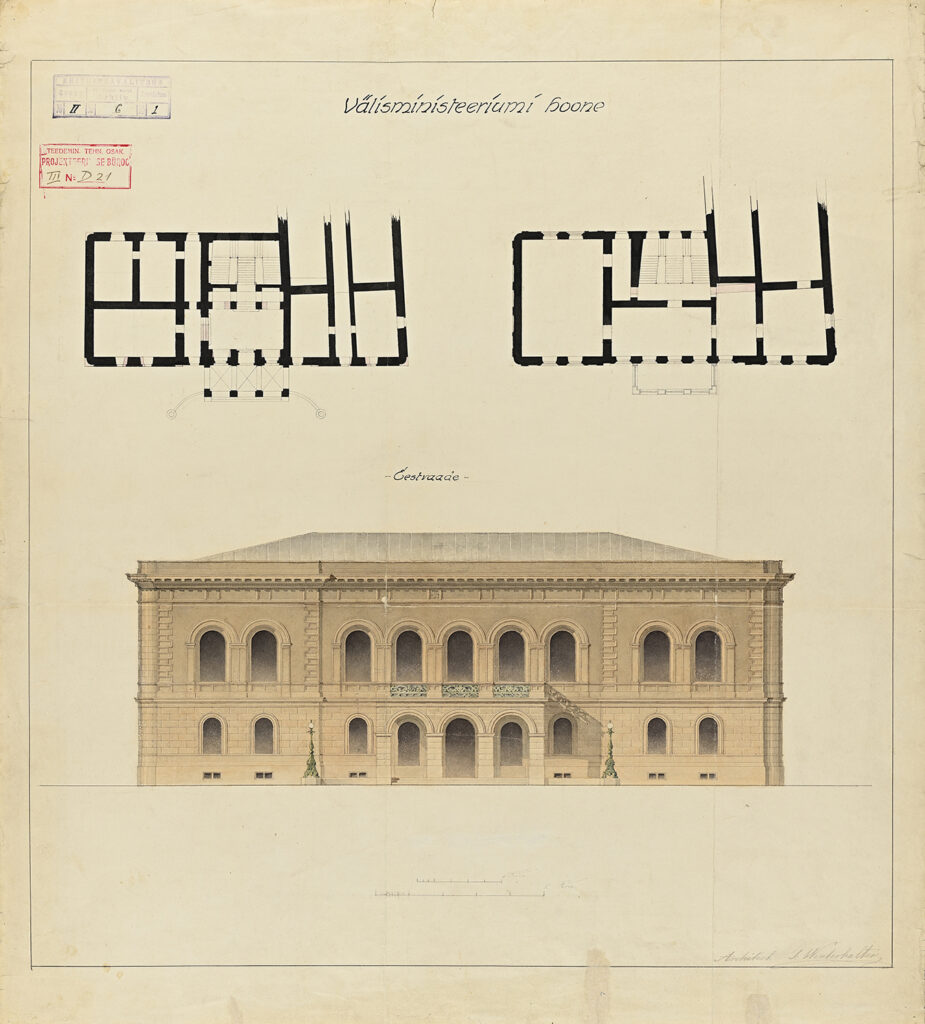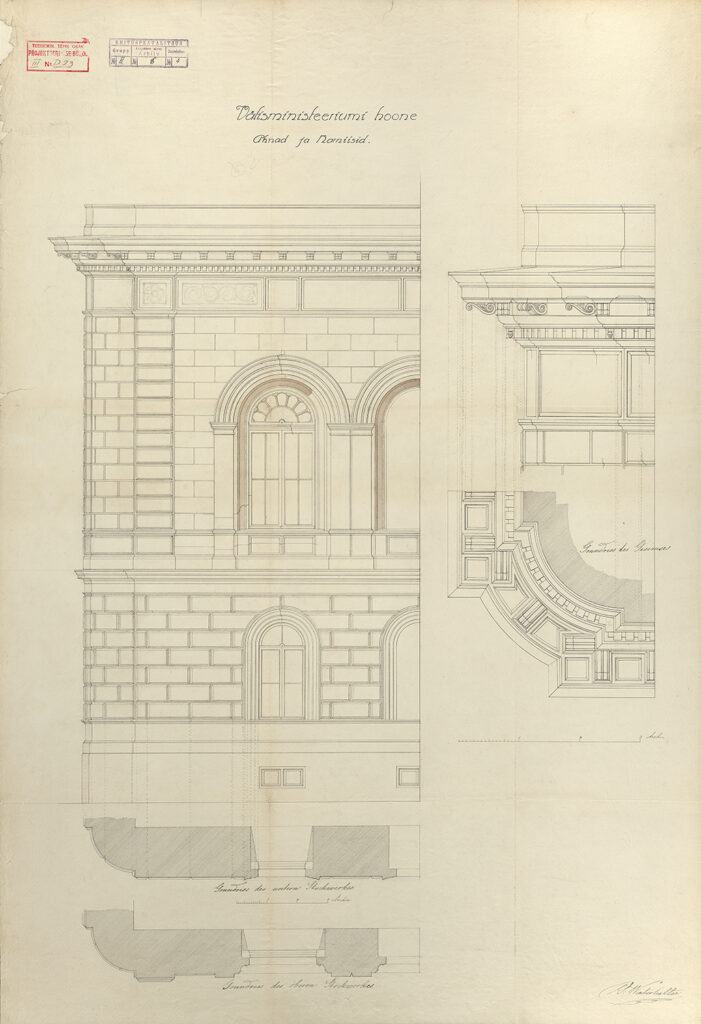- Estonian Knighthood House in Toompea, extract from the drawing
- Estonian Knighthood House in Toompea
- Detail of the façade of the Estonian Knighthood House
Georg Winterhalter, 1848. EAM 2.3.5
Estonian Knighthood House
The Estonian Knighthood House in Toompea was the only Neo-Renaissance building in Tallinn at the time of its construction. The building was originally designed by the architect of the Estonian Governorate, Christoph August Gabler, and construction began in 1845. However, Gabler’s classical architectural style did not meet the wishes of the knighthood. After a temporary pause in construction while the necessary building permits were obtained, and the completion of the major works in 1847, the Knighthood commissioned a new façade design from the young architect Georg Winterhalter from St Petersburg. The Neo-Renaissance façade is covered with a varied decoration. The walls are articulated by plasterwork and the windows are surrounded by a rich structural frame, the softness of the building’s rounded corners is counterbalanced by a heavy cantilevered cornice.
The Estonian Knighthood was abolished in 1920 and the building became the property of the state. The building has housed the Estonian Ministry of Foreign Affairs (1920-1940), the National Library of Estonia (1948-1992), the Art Museum of Estonia (1993-?) and the Estonian Academy of Arts (2009-2016).
Drawings of the façade of the Estonian Knighthood House are among the oldest in the museum’s collection. Text: Anna-Liiza Izbaš
(To see more click on the image)












